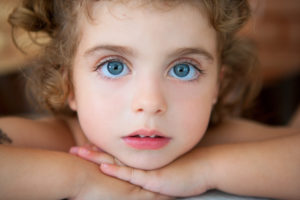
Children don’t misbehave, says Dr. Thomas Gordon, author of the best-selling book, Parent Effectiveness Training (P.E.T).
Wait a second, you say. Whoa! Everywhere you look there are children misbehaving.
Dr. Gordon says that children’s actions are judged as misbehaviors when those behaviors come into conflict with the desires of parents and other adults. What we judge or perceive to be misbehaviors are actually a child’s efforts to have his or her needs met.
For example, three-year-old Stephanie enters her 14-year-old sister Lisa’s room and pours out all of Lisa’s make-up and cologne into Lisa’s underwear drawer while applying a new face. Big mess. Big perceived misbehavior. Especially by Lisa.
Human beings have many needs, and trying to meet these needs makes us human.
We will gain insight into Stephanie’s actions when we look at how Stephanie was trying to meet her needs.
Stephanie’s parents, Jim and Linda, analyzed Stephanie’s behavior by asking how Stephanie’s needs were satisfied by disorganizing Lisa’s room. Jim and Linda looked at the following needs: activity, exploration, orientation, order, becoming, belonging, repetition, precision, exactness, communication and imagination. Let’s take a closer view at these needs.
Human beings have a need for activity. Stephanie needed an interesting activity to occupy her. What is that saying about idle hands?
People have a need to explore, orient and order our environment. Stephanie had a desire to explore her sister’s off-limits room. Stephanie had watched Lisa open bottles and put them back into the drawer, but Stephanie didn’t understand the order of the process. Stephanie had a need to orient herself to this grown-up activity.
Humans have a need to become, to have a sense of growth. Stephanie had watched her sister and mother put on make-up. We also have a need to belong. Stephanie wanted to put on make-up due to a need to become and to belong as a female in her family.
People have a need for repetition, exactness and perfection. Lisa should be careful. Because Stephanie didn’t get the make-up activity right the first time, Stephanie may have a need to try again, and again.
Stephanie also had a need to communicate that she was a ”big girl” since there was such an age spread between her and Lisa. Stephanie needed to use her imagination to create that ”big girl” image.
Children’s misbehavior occurs when children’s actions to meet their needs conflict with adult’s needs.
To meet everyone’s needs, both children’s and adults’, Dr. Gordon recommends that we step out of our roles as parents and focus on being a person, a human being who has needs and who is trying to help another younger, smaller person meet his or her needs. It’s about finding a solution where everyone wins.
Jim and Linda made it clear to Stephanie that Lisa’s room was off-limits, but they also designed some activities that helped to meet Stephanie’s needs. Lisa put together a basket of small colored bottles that Stephanie could open and close. Linda made Stephanie a mirrored make-up kit of lotions. Lisa kept her door locked but also spent time with Stephanie, letting her put makeup on Lisa.
By considering Stephanie’s behavior as needs-driven, Jim, Linda and Lisa found a way to direct Stephanie’s activities so that both Stephanie’s needs and their adult needs for order (and sanity) could be met.
For more information about Parent Effectiveness Training, visit http://www.gordontraining.com/parent-programs/parent-effectiveness-training-p-e-t/
